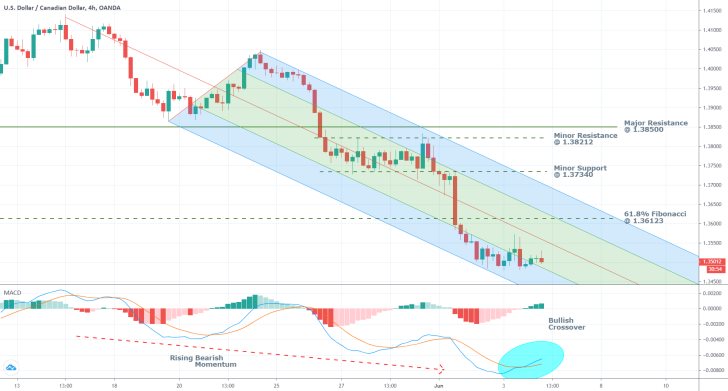
The Monetary Policy Committee (MPC) of the Bank of Canada met yesterday on one of the Bank's regular monetary policy meetings. Unsurprisingly, the Committee decided to keep the Overnight rate unchanged from its current value of 0.25 per cent.
The most important news from yesterday, however, is that the Bank would scale back some of its short-term funding operations. Chiefly, the Committee argued that because of improved conditions in Canada's financial markets, it deems it appropriate to reduce the frequency of its term repo operations to once per week.
The Committee justified its actions with the fact that the underlying economic conditions in Canada, which have been observed in the wake of the initial crash, suggest that the worst-case-scenario outlined in the MPC's Minutes from April has been avoided.
" Massive policy responses in advanced economies have helped to replace lost income and cushion the effect of economic shutdowns. Financial conditions have improved, and commodity prices have risen in recent weeks after falling sharply earlier this year.[…] Decisive and targeted fiscal actions, combined with lower interest rates, are buffering the impact of the shutdown on disposable income and helping to lay the foundation for economic recovery. While the outlook for the second half of 2020 and beyond remains heavily clouded, the Bank expects the economy to resume growth in the third quarter."
These admissions come just days after Statistics Canada revealed that the Canadian economy has had its steepest monthly contraction on record in March.
Nevertheless, there is more and more evidence suggesting that the general economic downturn globally may have already peaked, which clears the way for improvement.
The inroad to full economic recovery, however, remains obscured by uncertainty as the healthcare risks persist. Governments are likely to ease off their restrictions at varying speeds, which increases the likelihood of a protracted global recovery.
Even still, BOC's decision to scale back the timing of its short-term asset-purchasing programs is dictated by such positive improvements in economic and financial conditions.
Moreover, the revised conditions of the energy market complemented by an upsurge of crude oil's prices is welcoming news for the Canadian economy, which is among the biggest producers and exporters of the precious commodity.
As can be seen on the 4H chart below, the Canadian dollar continues to appreciate against the greenback because of these better-than-expected developments.
Meanwhile, the massive QE program in the States is impeding the competitiveness of the US dollar.
The USDCAD has been consistently depreciating as per our projections from the 29th of May. The pair is likely to continue falling; however, a minor bullish correction might be due.
As can be seen, the MACD is underscoring the substantial bearish momentum in the market. Yet, the recent bullish crossover could underline a temporary break in the underlying bearish trend's development.





















